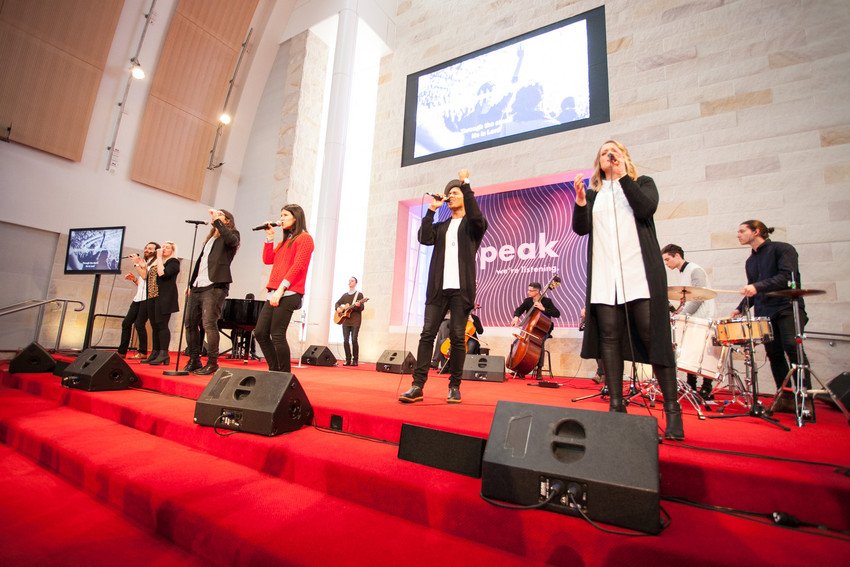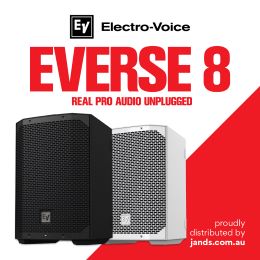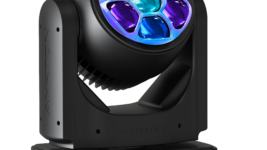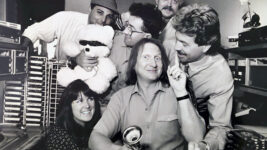Subscribe to CX E-News
The recent TV frequency re-stack and associated sell-off of bandwidth by the Australian Federal Government had radio microphone and in-ear-monitor users around the country checking their inventory for compliance, and replacing equipment that would no longer reliably function or be legally operable after the changes. For some, this was a simple exercise of a few channels in one location, but for major institutions like Hillsong Church, this was a major project over three states and more than a dozen locations, all with different radio spectrum requirements.
It was also an opportunity for Hillsong to evaluate the current market offerings in radio microphones and in-ear-monitors before they replaced inventory. Hillsong services are verbally and musically dynamic, with worship leaders, singers and musicians all relying on their radio devices to get their message heard. A radio microphone used by a pastor must provide excellent clarity to the congregation, while Hillsong’s platinum-selling worship bands feature some of Australia’s finest vocalists and musicians, who test the dynamic range of any radio device.
Steve Le Roux, Facilities Project Manager at Hillsong, oversaw the process of evaluating the equipment throughout the organisation and preparing for the looming frequency changeover. “I initially approached all of our campuses and extension services and got a list of all their radio equipment,” Steve explained. “It wasn’t a wish-list. It was about replacing what they had if it wasn’t compliant; they give me an old unit, and I give them a new unit. From that list, we determined that we’d need to replace the main Baulkham Hills radio devices and all the campuses. Equipment that was still compliant in the 600MHz range was redeployed into our extension services. As a whole, the process took five months.”
As this was a major financial as well as logistical undertaking, the Hillsong team were thorough in their assessment of both technical performance and overall costs. “We wanted the best value for money, so we needed to look at all the major players,” Steve continued. “We got some demo rigs in and compared apples to apples. Reid Wall from our Brisbane campus ran the demo assessments. Cost-wise, Jands and Shure really came to the table and sharpened their pencils.”
Across Hillsong’s locations, the technical team decided on a combination Shure UHF-R, ULX-D, and QLX-D radio microphones, along with PSM 300, PSM 900, and PSM 1000 in-ear-monitors. “We’ve gone to ULX-D in all campuses except Baulkham Hills, where we’ve stayed with UHF-R,” Steve elaborated. “Most main campuses run around 14 channels of IEM, six MC mics, and six vocal mics. Our 12 satellites usually run about six channels total.”
“I wanted really reliable RF performance,” stated Reid Wall. “I need to confidently put all microphones and in-ears on stage and know they’re not going to drop out. I spend a lot of time mixing monitors, so the reliability of in-ears is a big deal to me. The PSM 1000s instantly impressed me. Their RF performance is ridiculous and I can’t believe how hard it is to make them ‘not work’. On other systems you can hear some intermittent RF interference and everybody just accepts it as part of using wireless. After using PSM 1000s, I don’t consider what other systems do to be ‘working’. PSM 1000s are a game changer for wireless IEM.”
Complementing the new in-ear systems in Brisbane, Reid added a combination ULX-D and QLX-D wireless microphone systems. “Finding frequencies for them was so easy,” Reid continued. “They use such a narrow amount of spectrum. I can easily sub-hire extra channels when needed and drop them in without problems. I also love being able to manage everything in Shure’s Wireless Workbench RF management software. Being able to monitor every mic and in-ear system with one piece of software that also functions as the coordination and control software is really handy.”
Sonic and RF performance is important, but ongoing operating costs were also taken into account. Hillsong enthusiastically adopted the option of rechargeable Lithium-Ion batteries across the Shure range, simplifying battery management, reducing environmental impact and saving the organisation money in the long-term. “We did a cost analysis on the rechargeable batteries,” reported Steve Le Roux, “and within two years, we will have paid for the batteries and the rechargers.” Reid concurred; “The ability to have all my in-ears and mics sitting in chargers at ‘monitor world’ is awesome. The band and singers just pick-up and drop off their gear from the chargers, and I don’t have to worry about batteries.”
Jands provided extensive support to Hillsong during the rollout, including RF engineering to ensure correct frequency allocation per site and region. “Using Shure’s Wireless Workbench software, we did scans in each campus,” related Steve Le Roux. “The scans were sent to Jands Jeff MacKenzie, and Peter Twartz, who coordinated each campus’ frequency allocation. We’ve had no issues in the rollout, frequency-wise, even in an RF-heavy environment like Baulkham Hills, where we’ve split into two bands to allow us the flexibility to bring in external hire equipment.”
Subscribe
Published monthly since 1991, our famous AV industry magazine is free for download or pay for print. Subscribers also receive CX News, our free weekly email with the latest industry news and jobs.












